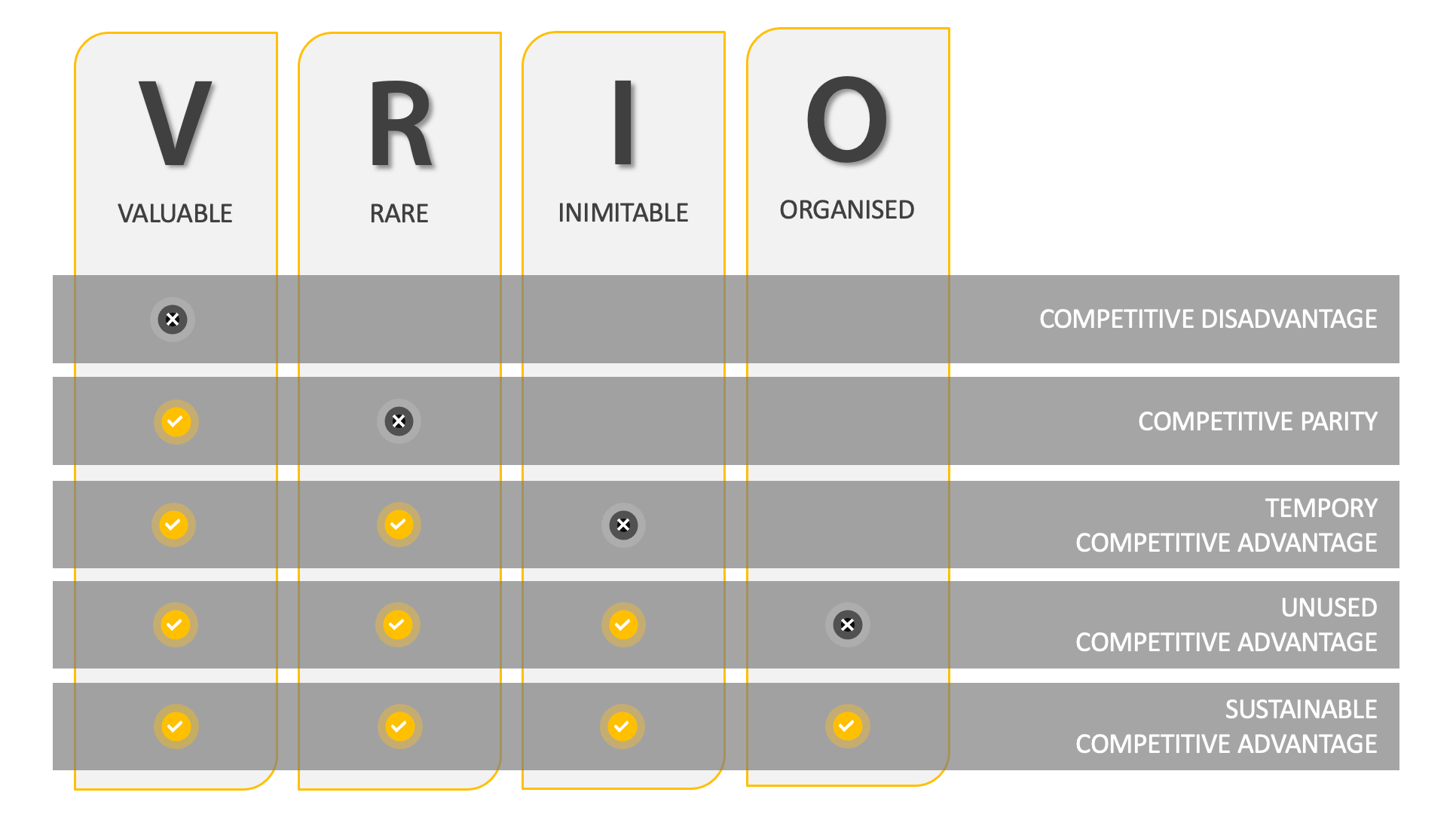What is VRIO? – When it comes to strategic analysis, structured frameworks are extremely useful for guiding your development work. We’ve already looked at SWOT analysis (Strengths, Weaknesses, Opportunities, and Threats) as a key strategic development tool and today we’ll turn our attention to VRIO, which is used extensively in business.
What is VRIO?
VRIO is a useful internally-focused framework that helps businesses to map out the resources that make them successful and to understand which of those resources offer a competitive advantage. The tool’s outputs then provide a guide for decision-making and priority-setting at a strategic level across the business.
What does VRIO stand for?
The acronym means, and these refer to the way that you can assess your resources in a strategic way: Valuable, Rarity, Imitability, and Organized.
What things does it measure?
The VRIO framework highlights what gives your business a competitive advantage in the long term. These elements could be resources, products and services, partnerships, IP, assets, talent or resources for example.
How does it work?
It’s quite simple. Together, your business leaders (and other identified subject matter experts) will identify the resources, capabilities and assets which you believe give you a competitive advantage in your market. You then apply the VRIO test to each as follows:
- Is the resource VALUABLE? If so, you have a potential competitive advantage
- Is it RARE? If so, you will likely have competitive parity with another brand or provider in your space
- Is it INIMITABLE? If so, any competitive advantage that you do have will be temporary, as other firms catch up.
- Is it ORGANISED? If not, you have an unused competitive advantage waiting in the wings – and you should leverage it fast!
As you can see, although the model uses acronyms, the questions that it basically asks are:
- is the product, service or business unit/activity profitable? (Value)
- How common is it? (Rare)
- Can it be easily copied? (Imitability)
- Is your business currently squeezing the full economic potential of the resource? (Organised)l
Building your VRIO analysis
Resources are considered valuable if they add value to the company, and allow it to either take on new opportunities or limit threats. Your company SWOT analysis will show valuable resources in your Strength Quadrant. Ask whether these resources provide value for customers, allow you to win sales, or remove threats from your SWOT, for example.
Perhaps the easiest aspect of VRIO to determine is the rarity of your resources – looking at whether each can be easily replaced or acquired by competitors (technology for example.)
The inimitable aspect measures how easily resource resources can be copied or substituted. Can a competitor simply copy what you do – such as by developing a similar feature or applying the same marketing approach? Or is your resource something like a strong brand, a talented team or a CRM system packed with valuable legacy data? If so, this is far harder to replicate.
The ‘Organised’ area is perhaps the most interesting for business leaders – looking at how your strategic resources can be organised to generate as much return as possible. This is where the true value of the model becomes clear. To assess this section you will need to ask questions such as, is there a management system for this resource, how are we measuring its outputs, and are we using benchmarking of some kind to assess it?
What it will reveal
When you have completed your VRIO analysis, you will be able to see where your competitive advantage lies, and how you can further leverage your resources, and/or enter or grow in key markets.
The advantages
This model is very easy and effective to use, and – when you carry it out well – it can help to boost your competitive position. VRIO is also a great model for internal analysis and it’s comprehensive too – without being complicated. Just remember to do it regularly as things change in your business and the external landscape. Remember too that it is a subjective model and should be used within a broader strategic framework, as one of your assessment tools, with the appropriate ongoing measurement framework in place.
A VRIO case study: Google
Google is just one business that uses VRIO. We can apply the model to its use of human capital management – which uses vast amounts of data to manage its people.
VALUE: Google uses its human capital management data to secure some of the best talent in the industry – and these employees are able to produce some of the world’s most popular tech products. Undoubted value!
RARITY: No other business is able to leverage Google’s approach to employee management in such a measured way, as yet.
IMITABILITY: Data-based human capital management is difficult to copy and expensive too – at least for now. It requires extensive investment in software and training for HR staff and is both a strategy and a tech solution.
ORGANISATION: Google is already optimised to extract value from its human capital management strategy. Its people are also extensively trained in the strategy, system, and application of human capital management and data in order to get the most from Google’s employer base.
The importance of measures
One way to make sure VRIO works for your business is through taking thorough and consistent measures at every stage. Just look at Google in our case study above! Successful businesses will use tools such as VRIO and SWOT as part of a comprehensive methodology for strategic development. We recommend the use of Spider Impact to manage business strategy and KPIs and to better visualise your data.



